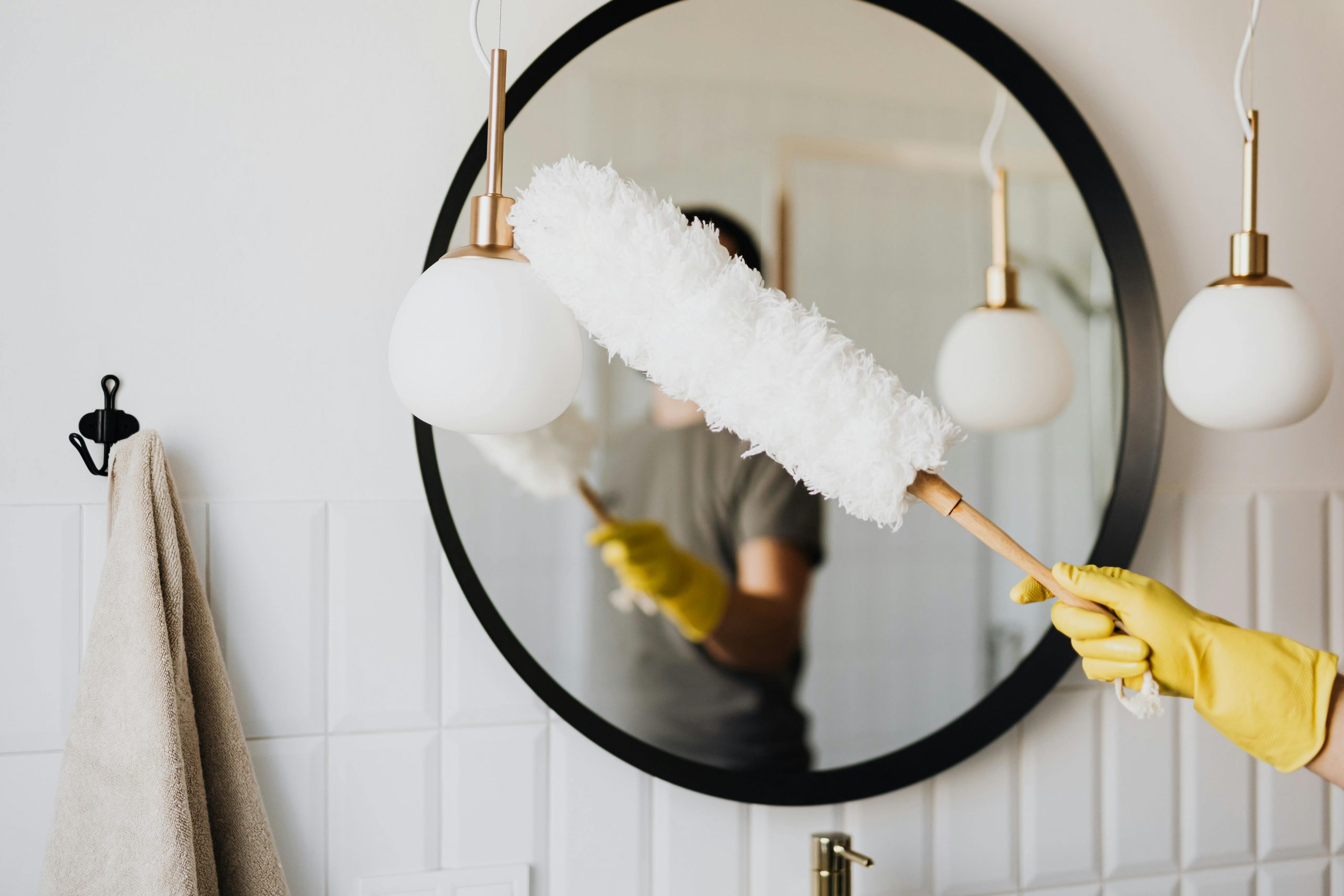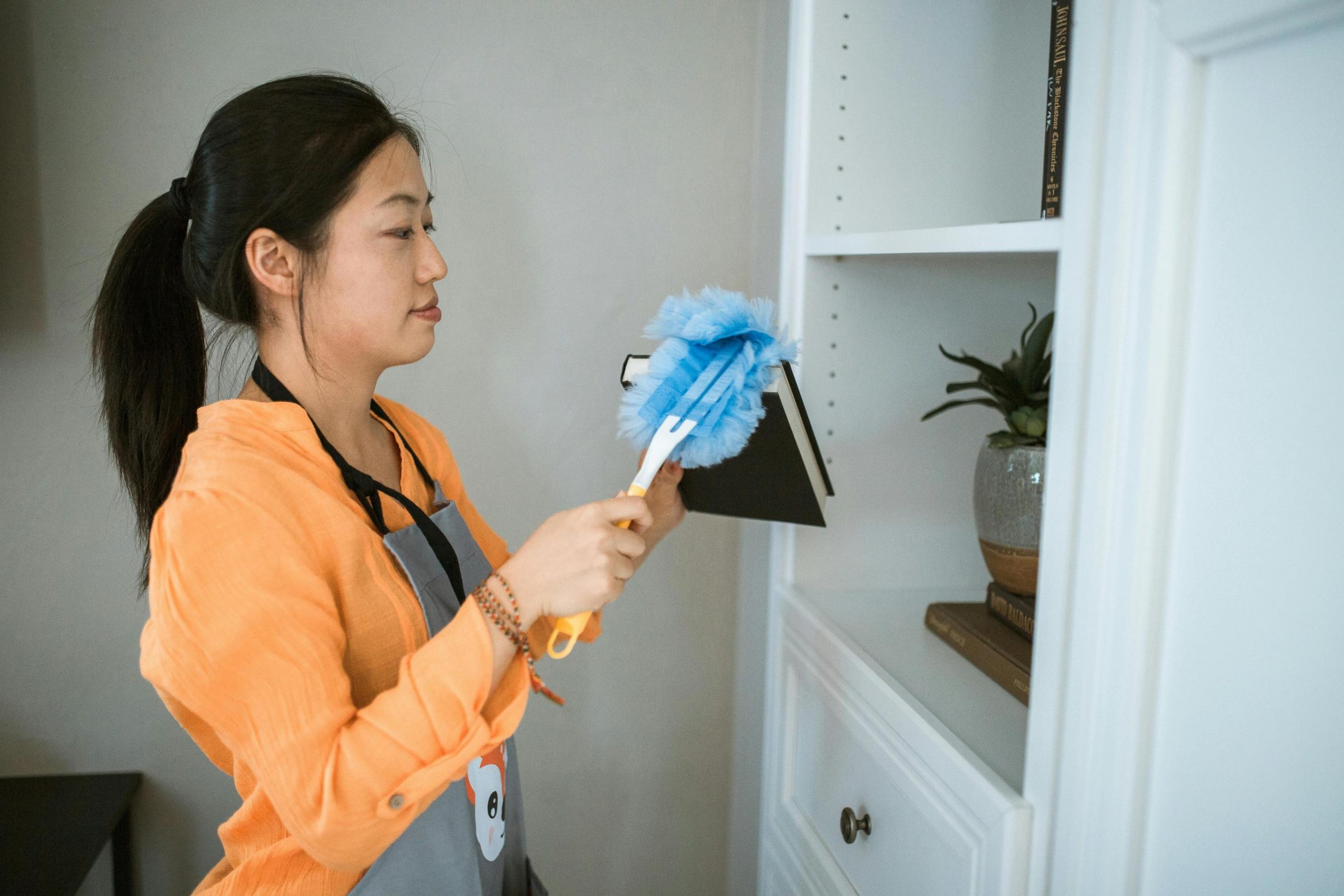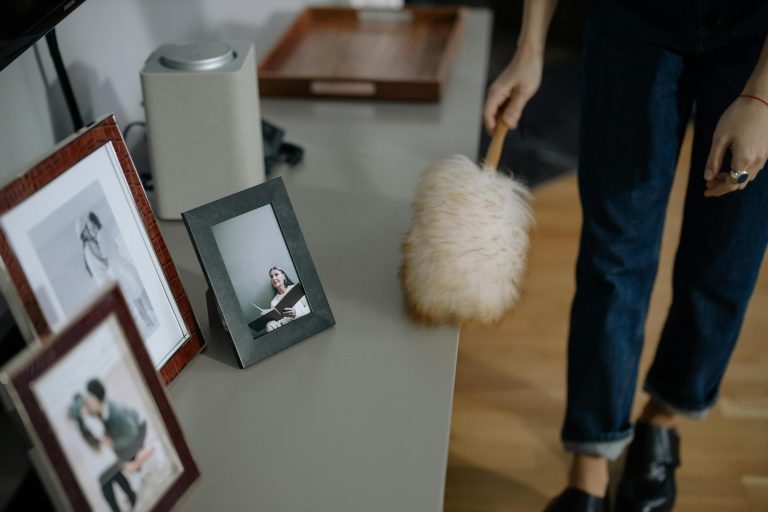Tired of Dust? How Often Should You Dust Your House & Why

Dusting might not be the most exciting chore, but it’s one of the most important. Dust isn’t just a little nuisance—it’s made of skin cells, pet dander, pollen, and even bacteria. Too much of it can cause allergies, asthma flare-ups, and make your home look and feel dirty.
So, how often should you dust your house to keep it clean and healthy? The answer depends on several things, including your lifestyle, where you live, and whether you have pets. This guide breaks it all down for you and gives you tips on how to dust more efficiently—without spending all day doing it.
Why Regular Dusting Is More Important Than You Think
Dust may seem harmless, but letting it build up over time can affect both your health and your home. While it might be easy to ignore a light coating on shelves or ceiling fans, regular dusting plays a bigger role than most people realize.
- Dust triggers allergies and asthma. It contains allergens like pet dander, pollen, and dust mites that can make breathing harder—especially for people with sensitivities.
- It puts stress on your HVAC system. Dust gets pulled into vents and clogs filters, making your heating and cooling systems work harder and raising energy bills.
- It can damage electronics. Devices like TVs, computers, and gaming consoles can overheat or break down when dust blocks airflow and vents.
- Dust dulls surfaces and leaves odors. Over time, it creates a stale smell and makes your home look dirty, even if you’ve vacuumed or mopped.
Regular dusting not only keeps your home looking neat, it also improves air quality, extends the life of your belongings, and helps maintain a healthier living environment. If you’re wondering how often you should dust your house, the answer starts with understanding just how important this simple chore really is.
What Is Dust Made Of?
You might be surprised by what’s floating around your home. Household dust is a mix of:
- Dead skin cells
- Hair (human and pet)
- Pollen
- Dust mites
- Fabric fibers
- Outdoor dirt
- Mold spores
- Bacteria
Every time you open a door or window, you let in more dust. Add in foot traffic, pets, and air movement, and it’s no wonder it piles up so fast.
How Often Should You Dust Your House?
There’s no one-size-fits-all answer, but here’s a good starting point:
High-Traffic Areas: 1–2 Times a Week
Rooms you use every day—like the living room, kitchen, and bedrooms—should be dusted at least once or twice per week. These spaces collect more dirt because of constant use, so regular dusting keeps allergens under control.
Low-Traffic Areas: Every 2–4 Weeks
Dust less-used spaces, like guest bedrooms, formal dining rooms, or storage areas, once every 2 to 4 weeks. These rooms don’t collect dust as quickly but still need attention to prevent buildup.
Hard-to-Reach Places: Once a Month or More
Ceiling fans, blinds, vents, and the tops of cabinets or bookshelves are magnets for dust. Try to dust these spots monthly to avoid deep buildup.
Electronics: Weekly
Dust can block vents on electronics and cause them to overheat. Wipe down TVs, computer screens, speakers, and game consoles with a microfiber cloth every week.
Baseboards & Trim: Every 2–4 Weeks
These surfaces are often forgotten, but they collect a surprising amount of dust. A quick wipe-down every few weeks helps keep your home feeling fresh.
Dusting Schedule Based on Lifestyle
Your cleaning frequency should also match your lifestyle:
If You Have Pets
Dust 2–3 times per week. Pet hair and dander increase how fast dust builds up. Vacuuming and dusting more often keeps allergens in check.
If You Live in a Dry or Windy Area
Outdoor dust blows in quickly. You’ll likely need to dust twice a week, especially near doors, windows, and vents.
If You Have Allergies or Asthma
Dusting several times a week is best. Consider using a HEPA-filter vacuum and air purifier to improve air quality.
If You Work From Home or Have Kids
The more people at home, the more dust gets stirred up. Aim to dust twice a week in busy areas.
Tools That Make Dusting Easier
The right tools can make a big difference in how fast and how well you dust.
- Microfiber cloths – These grab and trap dust, instead of spreading it around.
- Extendable dusters – Perfect for ceiling fans, tall shelves, and corners.
- Electrostatic dusters – Attract fine dust particles and are great for electronics.
- Vacuum with dusting attachments – Clean vents, curtains, and baseboards with ease.
- Damp cloth or sponge – Useful for sticky or greasy areas like the kitchen.
Avoid feather dusters—they often push dust into the air instead of picking it up.
How to Dust the Right Way
Just wiping things quickly won’t do much. Use these tips to dust more effectively:
- Start high and work your way down – Dust settles downward, so clean ceiling fans and shelves first, then furniture, and finish with baseboards.
- Use a damp cloth when needed – Dry dusting can leave residue. A slightly damp microfiber cloth traps particles better.
- Use two hands – One hand to dust, and one to hold or move items, so you don’t skip around them.
- Don’t forget corners and edges – Dust loves hiding in these areas.
- Finish by vacuuming floors – If you’ve ever wondered whether to dust or vacuum first, the answer is dust first. Vacuuming last collects all the fallen particles.
Room-by-Room Dusting Guide
To help you stay organized, here’s a breakdown of what to dust—and how often—in each room of your home:
Living Room
- Dust: TV, shelves, coffee table, electronics, baseboards, and blinds
- Frequency: 1–2 times per week
- Tips: Use a microfiber cloth and avoid spraying liquid on electronics
Bedroom
- Dust: Nightstands, dressers, ceiling fan, blinds, headboard
- Frequency: Weekly
- Tips: Wash bedding weekly to reduce dust mites
Kitchen
- Dust: Cabinets, light fixtures, baseboards, range hood
- Frequency: Weekly
- Tips: Use a damp cloth for greasy areas
Bathroom
- Dust: Light fixtures, baseboards, exhaust fans
- Frequency: Every 1–2 weeks
- Tips: Be careful around moisture—use dry cloths where needed
Home Office
- Dust: Keyboard, monitor, desk, printer, shelves
- Frequency: Weekly
- Tips: Use electrostatic cloths to reduce static and protect electronics
Hallways & Entryways
- Dust: Baseboards, light switches, picture frames
- Frequency: Every 2–4 weeks
- Tips: These often get missed, so set a reminder to check them monthly
Tips to Keep Dust Away Longer
While you can’t eliminate dust completely, you can slow it down. Try these simple strategies:
- Use doormats to trap dirt before it enters
- Take off shoes indoors to reduce dust and allergens
- Change HVAC filters every 1–3 months
- Use an air purifier in bedrooms and living areas
- Wash bedding and curtains regularly
- Keep pets groomed to reduce dander and shedding
- Declutter so there are fewer surfaces for dust to collect
These habits reduce how fast dust builds up—and how often you’ll need to clean.
What Happens If You Don’t Dust Often?
If you skip dusting for too long, the problems add up:
- Allergy symptoms may worsen due to dust mites and pet dander
- Air quality declines, especially for people with breathing issues
- Surfaces get grimy and harder to clean
- Dust settles into fabrics, making your home smell musty
- Your home looks dull, even if you’ve vacuumed and mopped
That’s why regular dusting is worth the effort. It’s a simple step that makes a big difference.
Final Thoughts
So, how often should you dust your house? The answer depends on your home, your lifestyle, and your personal needs—but for most people, once or twice a week in main areas is the sweet spot.
By sticking to a smart schedule, using the right tools, and remembering to dust before you vacuum, you’ll enjoy a cleaner, healthier, and more comfortable home. It doesn’t have to take hours. Just a few minutes of regular dusting can save you from bigger problems later.
And now that you know the best routines, techniques, and tools, dusting won’t feel like a guessing game anymore. It’ll just be another part of making your home a healthier place to live.





